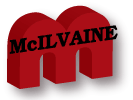
Coronavirus
Technology Solutions
April 1, 2020
Innovative Coronavirus
Mitigation Technology Can
Improve Conditions Immediately
A
McIlvaine webinar tomorrow will
cover Coronavirus Mitigation
Technology which can immediately
have a major impact.
While
the rest of the world is
struggling with melt blown media
shortages to make disposable
masks with N95 efficiency, China
is moving forward to supply not
only healthcare workers but all
citizens with washable N95
filters using nanofiber
membranes.

Reusable mask production
at Chinese factory
The
filter’s cost is quoted at
anywhere from $3-5 and the
number of wearings at 10-20. So
the cost per wearing is from 50
cents to just 15 cents. The
masks can be cleaned with
alcohol or by heating in the
oven. So users can clean their
masks without any equipment
purchases.
Filtration experts tomorrow will
discuss virus capture in media
with various efficiencies. The
N95 capability would be highly
efficient in virus capture vs
the typical mask worn routinely
in China and other countries
where masks are a part of daily
life. Also N100 efficiency
could be provided with the
nanofibers.
The
immediate mask needs can be met
with decontamination procedures.
H2O2 cleaning
will soon be cleaning hundreds
of thousands of masks per day in
the U.S. There are gamma
irradiation facilities which can
be utilized to decontaminate
millions of masks per day.
ClO2 is another
technology already being used at
a Nebraska hospital.
It is
likely that workers can be
protected by wearing masks while
taking public transportation
and in the workplace when not in
safe zones. There would be
creation of safe zones where
everyone in the area has been
tested but practices distancing
where possible. HEPA filtered
recirculating air would be
provided. Room air
purifiers would be another
alternative. Good monitoring
would measure the small
particles in the air. They
can compare the efficiency of
the recirculating filters to
outside air and thus be a
surrogate for virus reduction.
Masks
and filters not only reduce
airborne transmission but reduce
the settling of viruses on
surfaces. If gloves are also
worn in non-safe places there is
further reduction in risk
through contact. The latest data
shows that airborne transmission
of virus aerosol droplets in
sizes less than 5 microns are an
important transmission
mechanism. So masks and safe
zone practices can greatly
reduce risk to workers.
